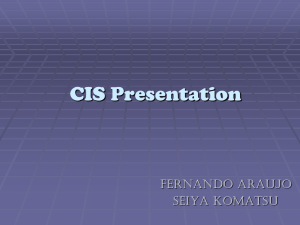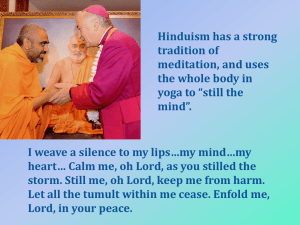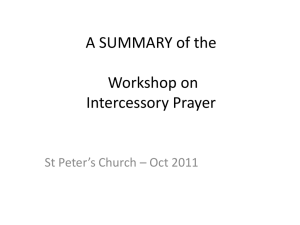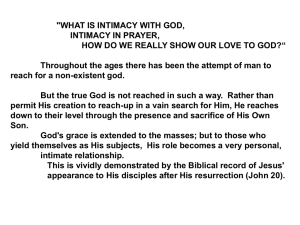Christian Worship (1): The Lord`s Prayer
advertisement
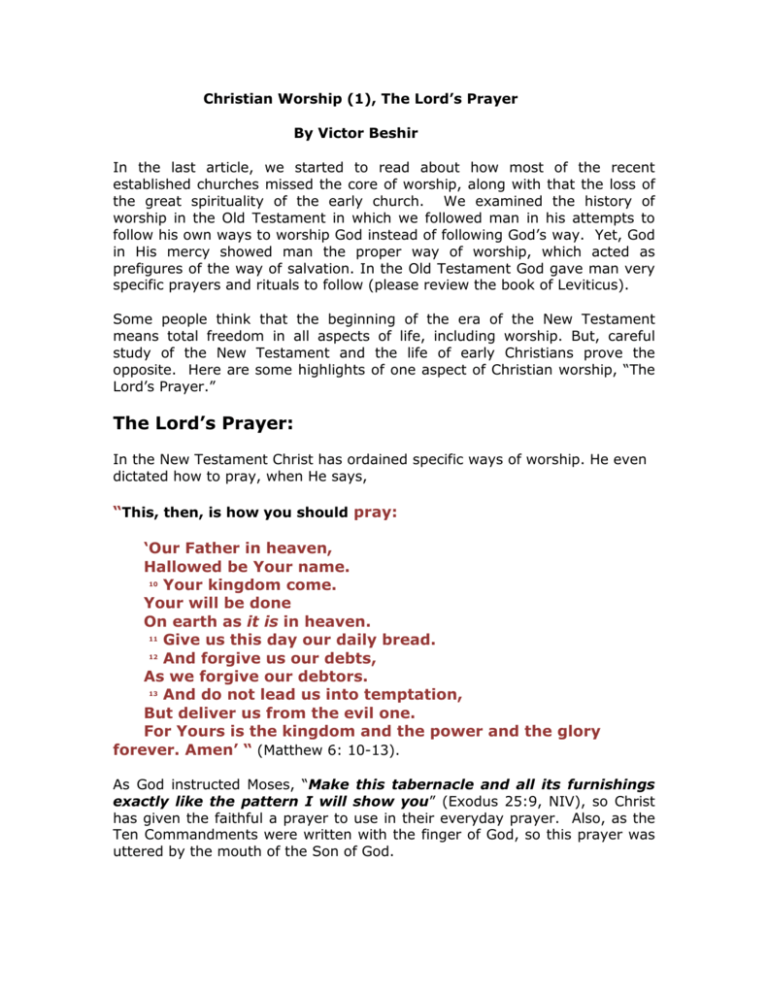
Christian Worship (1), The Lord’s Prayer By Victor Beshir In the last article, we started to read about how most of the recent established churches missed the core of worship, along with that the loss of the great spirituality of the early church. We examined the history of worship in the Old Testament in which we followed man in his attempts to follow his own ways to worship God instead of following God’s way. Yet, God in His mercy showed man the proper way of worship, which acted as prefigures of the way of salvation. In the Old Testament God gave man very specific prayers and rituals to follow (please review the book of Leviticus). Some people think that the beginning of the era of the New Testament means total freedom in all aspects of life, including worship. But, careful study of the New Testament and the life of early Christians prove the opposite. Here are some highlights of one aspect of Christian worship, “The Lord’s Prayer.” The Lord’s Prayer: In the New Testament Christ has ordained specific ways of worship. He even dictated how to pray, when He says, “This, then, is how you should pray: ‘Our Father in heaven, Hallowed be Your name. 10 Your kingdom come. Your will be done On earth as it is in heaven. 11 Give us this day our daily bread. 12 And forgive us our debts, As we forgive our debtors. 13 And do not lead us into temptation, But deliver us from the evil one. For Yours is the kingdom and the power and the glory forever. Amen’ “ (Matthew 6: 10-13). As God instructed Moses, “Make this tabernacle and all its furnishings exactly like the pattern I will show you” (Exodus 25:9, NIV), so Christ has given the faithful a prayer to use in their everyday prayer. Also, as the Ten Commandments were written with the finger of God, so this prayer was uttered by the mouth of the Son of God. Did the Apostles use the Lord’s Prayer? The Apostles not only used this prayer many times every day, but they also instructed the faithful to use it three times a day, as it is written in the book of “Didache” or “The Teaching of the Lord, by the Twelve Apostles, to the Gentiles”, which was written in the first century. They wrote, “The Lord’s Prayer is to be used thrice a day” (chapter 8). Did the Church use the Lord’s Prayer after the First Century? There are many historical records showing that the Church continued to use the Lord’s Prayer after the first century. In fact, the Church never stopped using the Lord’s Prayer since it was uttered by the Lord. It is still in use by all the Apostolic churches (the churches started by the apostles themselves). The Lord’s Prayer was used in individuals’ daily prayers and in the Church prayers as well. Here is an example of using the Lord’s Prayer in the Church main prayer, which is called Liturgy. The following is a description of the Liturgy of Addeus (Thaddeus the Apostle) and Maris (his co-worker): "The order of the Liturgy of the Apostles, composed by Mar Addai and Mar Mari, the blessed Apostles begins with the sign of the cross, after which the verse "Glory to God in the highest" etc. (Luke 2:14), the Lord's Prayer, and a prayer for the priest on Sundays and feasts of Our Lord.” Did Individuals use the Lord’s Prayer? The following are just two excerpts from the writings of the early Christian writers, who are referred to as the “Fathers of the Church.” Those excerpts are taken from the famous series: Ante-Nicene Fathers (ANF), which is a collection of the writings of the Fathers of the Church starting from the days of the apostles until 325 AD. 1- Tertullian (198 AD) praised the Lord’s Prayer as “it contained a summary of the whole Gospel” (ANF, Vol. 3, page 681). 2- Cyprian (250 AD) wrote: “Jesus Himself gave us a form of praying. He Himself advised and instructed us as to what we should pray for … What can be a more spiritual prayer than that which was given to us by Christ, by whom the Holy Spirit was also given to us ... So to pray in another way than what He taught is not merely ignorance-it is sin. For He Himself has established and said, “You reject the commandments of God so that you may keep your own tradition.” Therefore, beloved brethren, let us pray as God our Teacher has taught us … How much more do we obtain effectively when we ask in Christ’s name, if we ask for it in His own prayer! (ANF, Vol. 5, page 448) I invite you to remember how essential this prayer was from the days of the Apostles and afterwards, and how most of the churches established after the sixteenth century were either not aware of this prayer or neglected it! The Lord’s Prayer is a great source of spirituality that is not found in those churches. The Lord’s Prayer is just one example. In the following articles, I will talk about many other great channels of spirituality that are not found in those churches. The result is there are churches almost void of spirituality. We need to remember that the Church established by Christ and His Apostles was full of spirituality. Unfortunately, the new founders of those new churches decided to worship God not based on what was given by Christ and delivered by His apostles, but to worship using their own ways. The Bible invites those people saying, “Thus says the LORD: ‘Stand in the ways and see, And ask for the old paths, where the good way is, And walk in it; Then you will find rest for your souls. But they said, ‘We will not walk in it’ “(Jeremiah 6:16).
